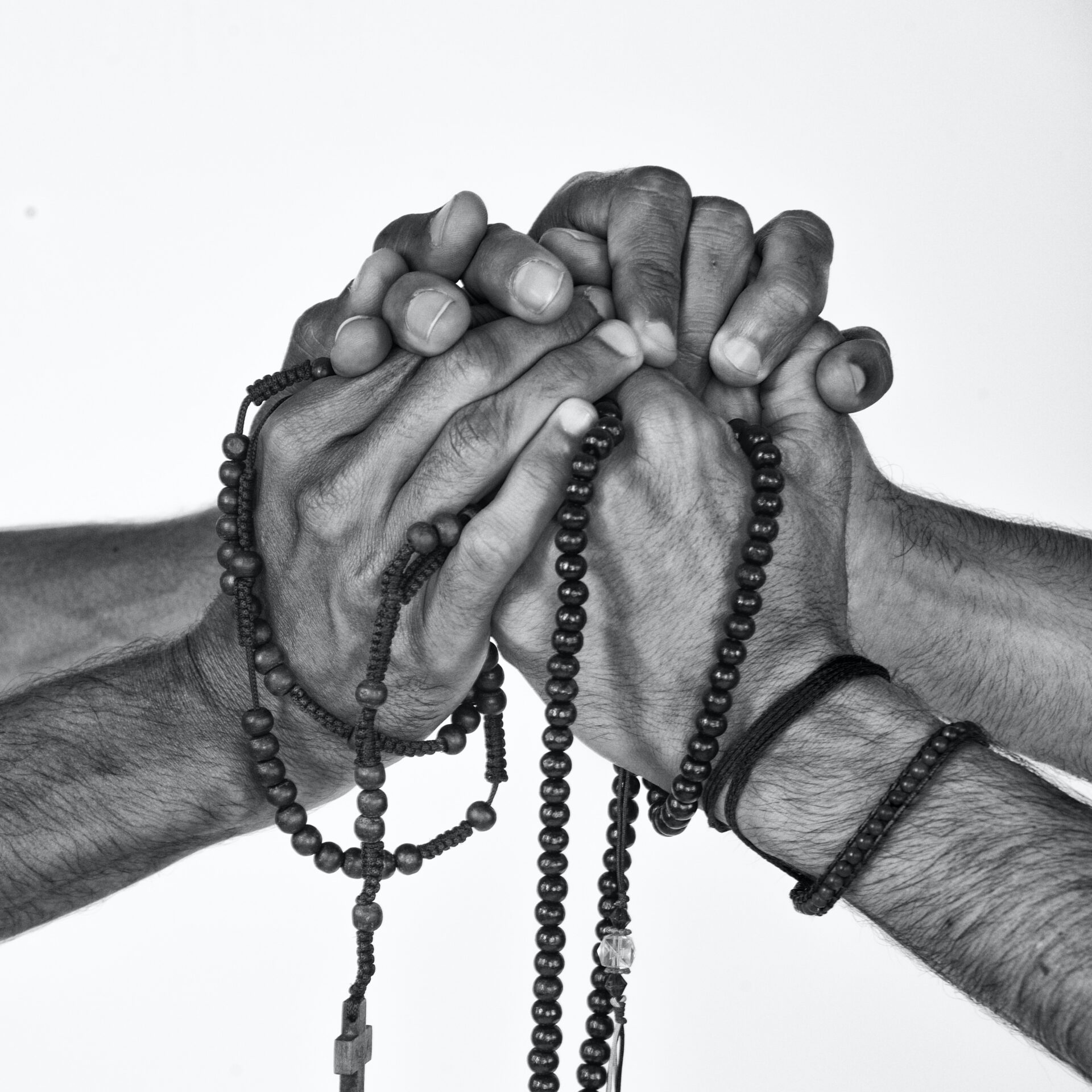Imagine a world where good triumphs over evil, love conquers all, and the power of loyalty and righteousness knows no bounds. This is the world of the Ramayana, an ancient Indian epic that has captured the hearts and minds of millions for centuries. With its rich tapestry of characters, gripping plotlines, and timeless teachings, the Ramayana holds immense significance not only as a religious scripture but also as a profound guide for living a virtuous life. In this article, we will explore the profound significance of the Ramayana and how its lessons continue to resonate with people of all ages and walks of life.

Table of Contents
Historical Context
Origin and Authorship
The Ramayana is an epic Hindu scripture that holds immense significance in Indian culture and religion. It is believed to have been written by the sage Valmiki, who was not only a poet but also a scholar of ancient Indian scriptures. Valmiki is considered the author and Rishi (seer) of the Ramayana, composing it in the Sanskrit language. The epic is believed to have been written around 5500 years ago.
Time Period and Setting
The Ramayana is set in the Treta Yuga, one of the four Yugas, or cosmic ages, mentioned in Hindu mythology. The Treta Yuga is believed to have taken place over 1.2 million years ago. The epic is primarily set in the Indian subcontinent, with key locations including Ayodhya, Mithila, Kishkindha, and Lanka (present-day Sri Lanka). The story spans across various kingdoms, making it a journey through ancient India.
Religious Significance
Sacred Text in Hinduism
The Ramayana is considered one of the most sacred texts in Hinduism. It is revered as a religious scripture and holds great importance in Hindu worship. Many Hindus consider reciting or listening to the Ramayana as an act of devotion and an opportunity for spiritual growth. The epic serves as a guide for spiritual seekers in their quest for understanding dharma (righteousness) and attaining moksha (liberation from the cycle of birth and death).
Promotes Moral and Ethical Values
The Ramayana promotes moral and ethical values that remain relevant even in contemporary society. It depicts the virtues of righteousness, loyalty, duty, and sacrifice through the characters and their actions. The story teaches valuable life lessons and provides ethical guidelines for individuals to lead virtuous lives. Concepts such as respect for elders, compassion, and the importance of truth are widely propagated through the epic.
Worship and Devotion
The Ramayana inspires a deep sense of devotion and worship among Hindus. Devotees perform pujas (ritual offerings) and invoke the blessings of Lord Rama, the central character of the epic. Temples dedicated to Lord Rama and other prominent characters from the Ramayana, such as Hanuman, are scattered throughout the Indian subcontinent. Pilgrimages and religious gatherings often revolve around the recitation and celebration of the Ramayana.
Inspires Rituals and Festivals
The events depicted in the Ramayana form the basis of various rituals and festivals celebrated in Hinduism. Diwali, also known as Deepavali, is the most prominent festival associated with the Ramayana. It commemorates Lord Rama’s return to Ayodhya after defeating the demon king Ravana. During Diwali, homes are illuminated with lights, and firecrackers are burst to symbolize the victory of light over darkness. Several other festivals, such as Rama Navami and Hanuman Jayanti, are dedicated to Lord Rama and his devotees.
Literary Significance
Epic Poetry
The Ramayana is regarded as one of the greatest epic poems in world literature. It encompasses over 24,000 verses divided into seven books, known as Kandas. The composition of the Ramayana is a testament to ancient India’s rich literary tradition and the mastery of poetic expression. The use of allegory, metaphors, and vivid descriptions captivate the readers and transport them into a world of heroic deeds and timeless wisdom.
Influence on Indian Literature
The Ramayana has had a profound influence on Indian literature and storytelling. It has inspired countless retellings, adaptations, and interpretations across different languages and regions of India. Many poets, scholars, and writers, including Tulsidas, Kamban, and Kambar, have composed their own versions of the Ramayana, each adding their unique cultural and regional flavor. The epic continues to serve as a wellspring of inspiration for authors, poets, and artists in India and beyond.
Art and Theatre Adaptations
The vivid characters and compelling narrative of the Ramayana have also found expression in various art forms, including painting, sculpture, dance, and theater. From the intricate miniature paintings of Rajasthan to the vibrant Kalamkari art of Andhra Pradesh, the illustrations of the Ramayana showcase the creativity and artistic talent of generations. Traditional dance forms like Kathakali in Kerala and Ram Lila performances in North India bring the epic to life through colorful costumes, elaborate make-up, and captivating performances.
Cultural Significance
National Symbol
The Ramayana holds an iconic status as a national symbol of India. Lord Rama, the protagonist of the epic, is revered as the ideal embodiment of a righteous king. His principles of justice, honor, and compassion continue to resonate with the Indian ethos and serve as a moral compass for the nation. The epic’s influence can be seen in various aspects of Indian culture, from literature and art to architecture and religious practices.
Regional Cultural Identity
The Ramayana has played a pivotal role in shaping regional cultural identities within India. Different parts of the country have their own unique versions and interpretations of the epic, adding to the diversity and richness of Indian culture. The Ramayana serves as a unifying force, transcending linguistic and regional boundaries, and fostering a sense of pride and heritage among the people.
Iconic Characters and Archetypes
The Ramayana is replete with iconic characters that have become archetypes in Indian storytelling and cultural symbolism. Lord Rama, Sita, Hanuman, and Ravana are widely recognized and revered figures in Indian mythology. Lord Rama represents the ideal king, Sita embodies the epitome of feminine strength and virtue, Hanuman symbolizes unwavering devotion, and Ravana personifies the consequences of arrogance and ego. These characters serve as moral beacons and role models, influencing societal ideals and aspirations.

Philosophical Significance
Dharma and Moral Duties
One of the central themes of the Ramayana is the concept of dharma, which refers to one’s moral duty and righteous path in life. The epic explores the complexities of dharma through the characters’ choices and actions. Lord Rama’s unwavering adherence to dharma, even in the face of immense challenges, inspires individuals to uphold their moral duties and make righteous decisions.
Concepts of Good and Evil
The Ramayana delves into the eternal battle between good and evil. Lord Rama represents the forces of righteousness, while Ravana symbolizes the embodiment of evil. The epic highlights the consequences of succumbing to evil desires and the importance of upholding values of truth, justice, and righteousness. It serves as a reminder that in the ultimate battle between good and evil, goodness always triumphs.
Symbolism and Allegories
The Ramayana employs rich symbolism and allegorical elements to convey deeper philosophical truths. The deep forests symbolize the challenges and trials faced by individuals on their spiritual journey. The golden deer represents the temptations and distractions that can lead one astray from their path. The bridge built by Lord Rama’s army to cross to Lanka signifies the power of unity and collaboration in overcoming obstacles. These allegories impart profound wisdom and provide insights into human nature and the human condition.
Social Significance
Gender Roles and Feminine Strength
The Ramayana encompasses various perspectives on gender roles and highlights the importance of feminine strength and virtue. Sita, the central female character, is portrayed as an epitome of loyalty, resilience, and sacrifice. Her unwavering devotion to her husband and her dignified endurance during her exile serve as a source of inspiration for women. The Ramayana challenges societal norms and emphasizes the equality and empowerment of women.
Social Hierarchy and Duties
The Ramayana reflects the social hierarchy prevalent in ancient Indian society and the corresponding duties of individuals belonging to different strata. Lord Rama, as a prince and later a king, is shown fulfilling his duty of upholding dharma and protecting his subjects. The epic emphasizes the importance of fulfilling one’s responsibilities and adhering to societal expectations, while also highlighting the need for compassion, mercy, and justice.
Effect on Society
The Ramayana has had a profound impact on Indian society throughout history. Its teachings and values have shaped societal norms, attitudes, and behavior. The epic has influenced the way individuals perceive and navigate their personal and professional lives. It has played a significant role in fostering communal harmony and shaping the social fabric of Indian communities by promoting ideals of morality, compassion, and unity.

Political Significance
Ram Rajya and Ideal Governance
The concept of Ram Rajya, derived from the Ramayana, represents the ideal form of governance. It envisions a just and righteous rule guided by the principles of dharma. Lord Rama’s reign in Ayodhya is considered the epitome of an ideal kingdom, where justice, equality, and welfare of the subjects are prioritized. The idea of Ram Rajya has influenced political leaders and movements, advocating for governance that is grounded in moral principles.
Influence on Political Leaders
The Ramayana has been a source of inspiration for political leaders in India and beyond. It has served as a guide for ethical leadership, shaping the values and principles that leaders strive to emulate. The character of Lord Rama, with his leadership qualities and adherence to dharma, has inspired countless political figures to govern with integrity, justice, and compassion.
Socio-Political Movements
The Ramayana has sparked various socio-political movements and campaigns throughout history. From advocating for social justice and equality to mobilizing communities for collective welfare, the epic has been used as a rallying cry to inspire positive change. The values and ideals depicted in the Ramayana continue to drive socio-political movements that aim to create a more just and equitable society.
Spiritual Significance
Path to Liberation and Enlightenment
The Ramayana serves as a spiritual guide, illuminating the path to liberation and enlightenment. It emphasizes the importance of self-realization and spiritual growth. Lord Rama’s journey through various trials and tribulations serves as a metaphor for the struggles individuals face on their own spiritual journeys. The epic teaches the principles of detachment, renunciation, and devotion as means to attain liberation from the cycle of birth and death.
Bhakti Yoga and Devotion
Bhakti Yoga, the path of devotion, is central to the teachings of the Ramayana. The epic encourages individuals to cultivate a deep sense of devotion and surrender to a higher power. The unwavering devotion of Lord Hanuman, who is considered the epitome of devotion, inspires individuals to develop a loving and reverent relationship with the divine. Bhakti Yoga acts as a transformative force, nurturing spiritual growth and fostering a deep connection with the divine.
Symbolic Representation of Inner Struggles
The Ramayana portrays various characters facing internal conflicts and dilemmas that mirror the struggles individuals face in their own lives. Lord Rama’s battles with doubt, sorrow, and moral dilemmas serve as allegorical representations of the inner journey towards self-realization. The epic offers insights into the human psyche and provides guidance in overcoming the inner obstacles that hinder spiritual progress.
Educational Significance
Moral Education for Children
The Ramayana has been a valuable resource for imparting moral education to children. It teaches them important life lessons such as the importance of honesty, integrity, and compassion. The epic’s vibrant characters and engaging storytelling make it an effective tool for conveying ethical values and instilling positive virtues in young minds. Parents and educators often use simplified versions of the Ramayana to teach children about virtues and the consequences of their actions.
Teaching Life Lessons
Beyond moral education, the Ramayana serves as a repository of valuable life lessons for individuals of all ages. The epic explores themes such as the consequences of greed, the power of loyalty, the significance of humility, and the rewards of perseverance. These lessons are applicable in various facets of life, from personal relationships and professional endeavors to societal interactions and global perspectives.
Cultural Heritage and Identity
The Ramayana plays a crucial role in preserving and perpetuating cultural heritage and identity. It acts as a repository of cultural history, traditions, and values that have been passed down through generations. The epic binds communities together through a shared narrative and a common understanding of cultural roots. The cultural significance of the Ramayana extends beyond religious boundaries, acting as a unifying force in diverse societies.
Global Significance
Influence on Southeast Asian Cultures
The Ramayana’s influence extends beyond the Indian subcontinent and has left a lasting impact on Southeast Asian cultures. The epic has been embraced and integrated into the cultural fabric of countries like Indonesia, Thailand, Cambodia, and Malaysia. It has inspired local art forms, architecture, and performances, showcasing the wide-reaching impact of the Ramayana’s teachings and values.
Spread of Hindu-Buddhist Ideas
The Ramayana played a significant role in the spread and exchange of ideas between Hinduism and Buddhism. As Buddhism expanded beyond the Indian subcontinent, the depiction of Lord Rama and other characters from the epic became intertwined with Buddhist teachings. The Ramayana served as a bridge between these two major religious traditions, facilitating the cross-pollination of ideas and beliefs.
Cross-Cultural Understanding
The Ramayana has become a medium for cross-cultural understanding and dialogue. Scholars, writers, and artists from various cultural backgrounds have embraced the epic and explored its themes, resulting in a deeper appreciation and understanding of different cultures. The universal themes of love, valor, and the eternal quest for truth resonate with people worldwide, fostering a sense of shared humanity and promoting harmony amid diversity.
In conclusion, the Ramayana holds immense significance in multiple dimensions – religious, literary, cultural, philosophical, social, political, spiritual, educational, and global. Its timeless teachings and narratives continue to inspire generations, shaping societal, cultural, and individual values. The Ramayana serves as a guiding light, offering profound insights and wisdom to navigate the complexities of life while fostering unity and harmony among diverse communities worldwide.